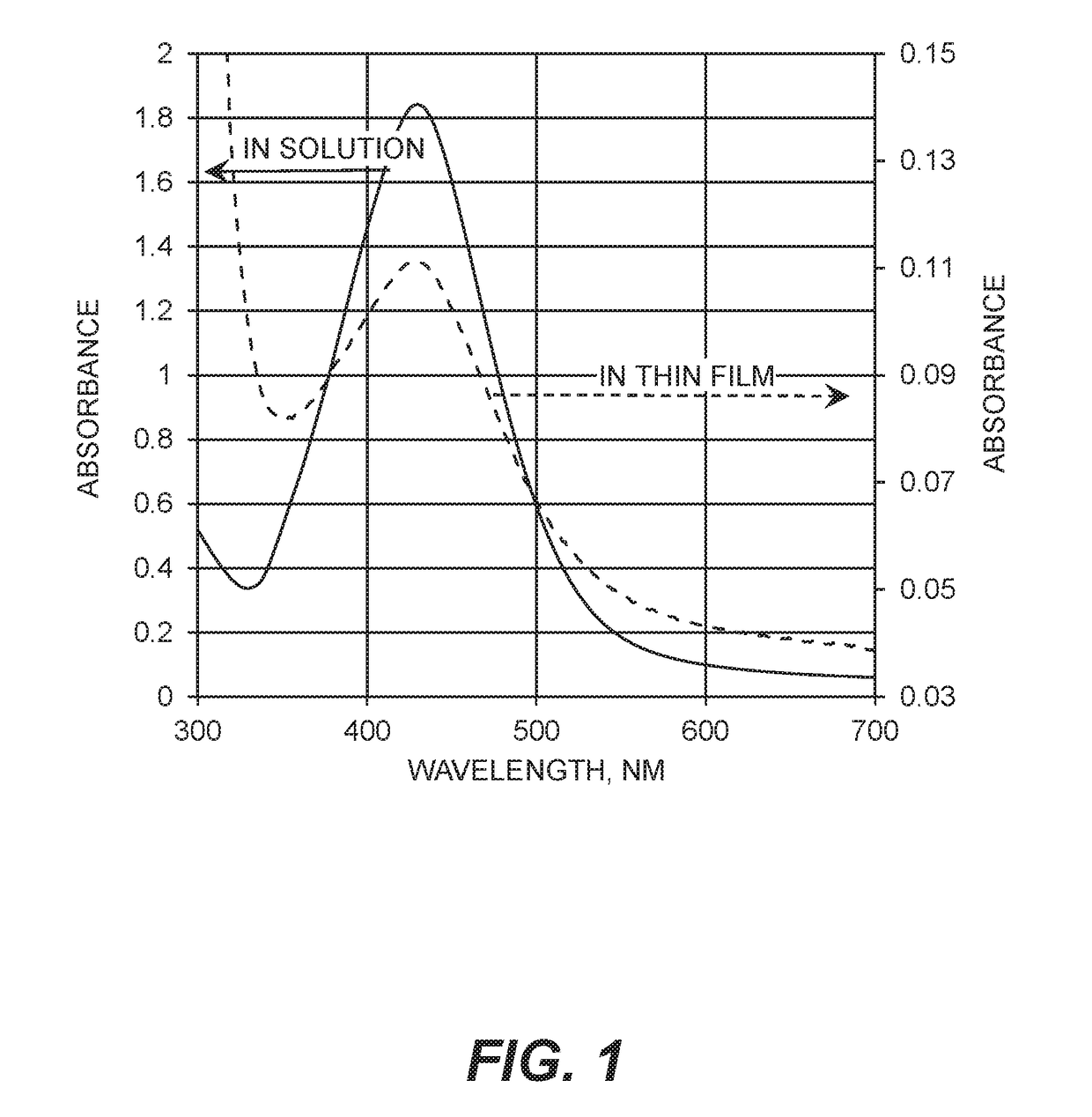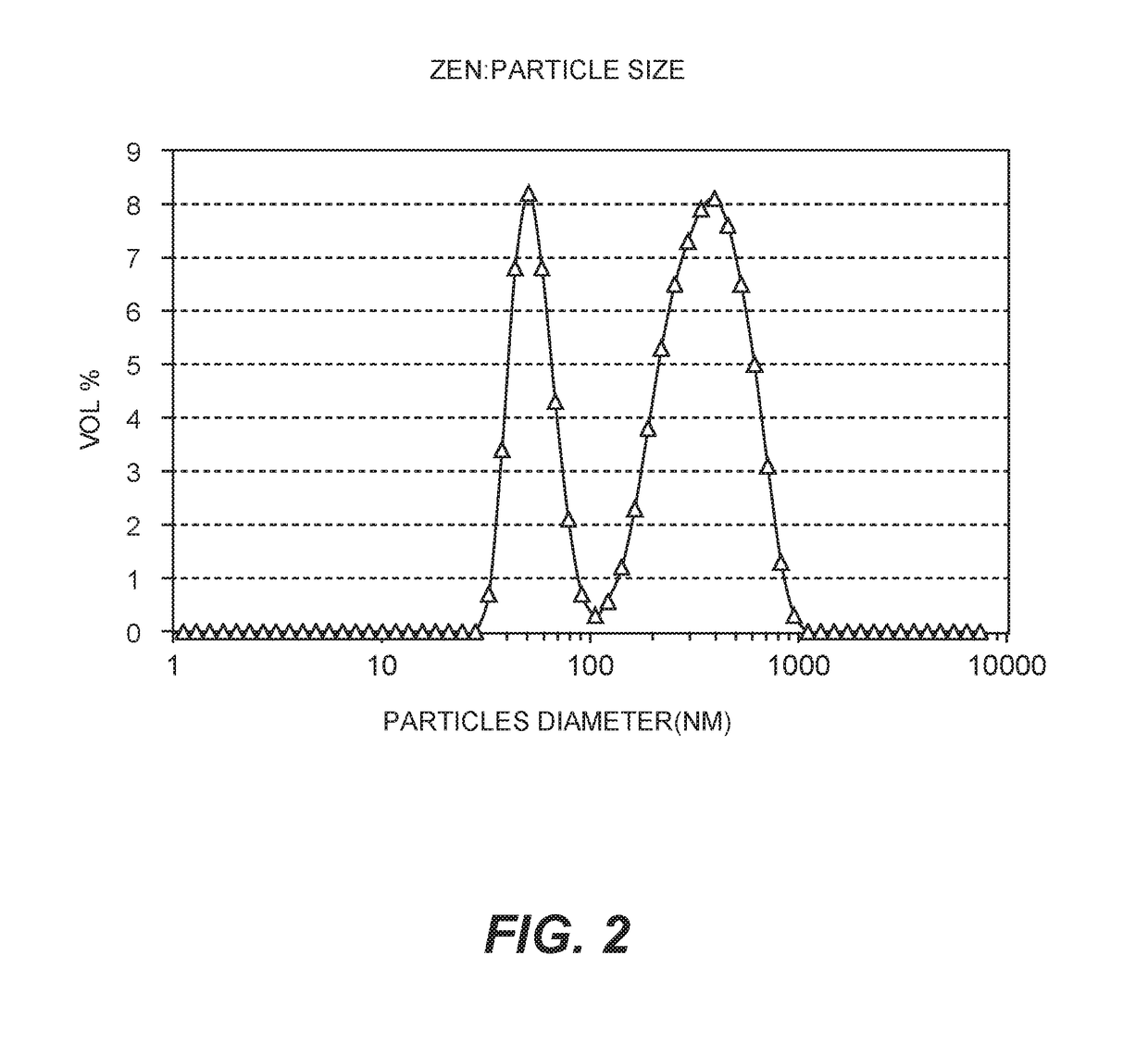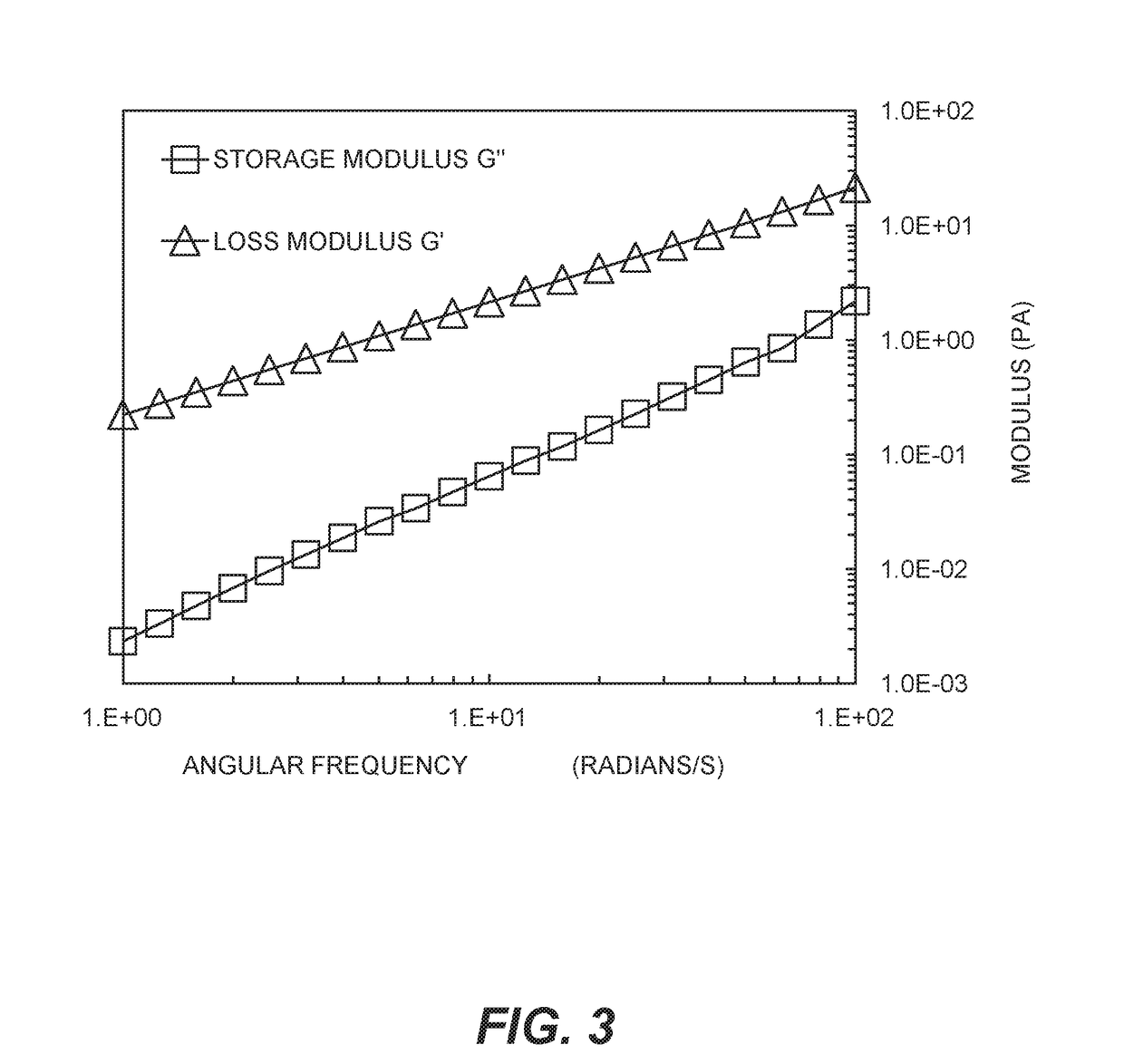Method of forming silver nanoparticles using cellulosic polymers
a cellulosic polymer and nanoparticle technology, applied in the direction of electrically conductive paints, liquid/solution decomposition chemical coatings, electrically conductive paints, etc., can solve the problems of incompatible ink with many polymeric and paper substrates, time-consuming and expensive photolithographic and electroless techniques, and inability to manufacture inks, etc., to achieve high weight fraction, simple and inexpensive, and easy to use
- Summary
- Abstract
- Description
- Claims
- Application Information
AI Technical Summary
Benefits of technology
Problems solved by technology
Method used
Image
Examples
invention example 1
Aqueous Silver Nanoparticle Composition in 2-Methoxyethanol
[0262]In a three-necked round bottomed flask, cellulose acetate (7.5 grams, Sigma Aldrich, 39.7 weight % acetyl, Mn˜50,000 by GPC) was dissolved in 2-methoxyethanol (138.75 grams) as the organic solvent medium by stirring at 90° C. for 30 minutes to obtain a 5 weight % solution of cellulose acetate in 2-methoxyethanol. The resulting solution was cooled to room temperature and silver nitrate (3.75 grams) was added while stirring to provide reducible silver ions. The resulting non-aqueous silver precursor composition was heated at 90-100° C. for 10-20 minutes using a heating mantle.
[0263]An amber-colored non-aqueous silver nanoparticle-containing composition was obtained and slowly cooled (over 30 minutes) to room temperature, and it contained 33 weight % of silver nanoparticles with respect to the weight of cellulose acetate polymer (that was present at about 5 weight %).
[0264]An aliquot of the aforementioned amber-colored no...
invention example 3
Aqueous Silver Nanoparticle-Containing Composition in 1-Methoxy-2-Propanol
[0271]In a 25 ml beaker, cellulose acetate propionate (0.5 grams, Eastman CAP 504-0.2) was dissolved in 1-methoxy-2-propanol (9.25 grams) by stirring at 90° C. for 30 minutes. This solution was cooled to room temperature and silver nitrate (0.25 grams) was added while stirring to provide reducible silver ions. The resulting non-aqueous silver precursor composition was heated at 90-110° C. for 10-20 minutes using a hot plate.
[0272]An amber-colored non-aqueous silver nanoparticle-containing composition was obtained and slowly cooled (over 30 minutes) to room temperature. The resulting amount of silver nanoparticles was 33 weight % with respect to the weight of the cellulose acetate propionate, and the conversion of reducible silver ions to silver nanoparticles was determined to be 97.7 mol % using Capillary Electrophoresis.
[0273]An aliquot of this amber-colored non-aqueous silver nanoparticle-containing composit...
invention example 4
ng and Copper Electroless Plating of Non-Aqueous Silver Nanoparticle-Containing Composition on a Transparent Polymeric Substrate
[0274]To a sample of the non-aqueous silver nanoparticle-containing composition described in Invention Example 3, 10 weight % of propylene carbonate was added and the resulting composition was mixed thoroughly. Fine lines of nominal width 7-10 μm were printed on a transparent poly(ethylene terephthalate) film substrate using this composition as the “ink,” a flexographic test printer IGT F1, and flexographic printing members obtained from commercially available Kodak Flexcel NX photopolymer plates that had been imaged using a mask that was written using the Kodak Square Spot laser technology at a resolution of 12,800 dpi.
[0275]The “printed” corresponding silver nanoparticle-containing pattern was dried in air to remove organic solvents. The nominal height of printed features was between 100 nm and 200 nm and the width of resulting fine lines was about 5-10 μ...
PUM
| Property | Measurement | Unit |
|---|---|---|
| Temperature | aaaaa | aaaaa |
| Temperature | aaaaa | aaaaa |
| Temperature | aaaaa | aaaaa |
Abstract
Description
Claims
Application Information
 Login to View More
Login to View More - R&D
- Intellectual Property
- Life Sciences
- Materials
- Tech Scout
- Unparalleled Data Quality
- Higher Quality Content
- 60% Fewer Hallucinations
Browse by: Latest US Patents, China's latest patents, Technical Efficacy Thesaurus, Application Domain, Technology Topic, Popular Technical Reports.
© 2025 PatSnap. All rights reserved.Legal|Privacy policy|Modern Slavery Act Transparency Statement|Sitemap|About US| Contact US: help@patsnap.com



